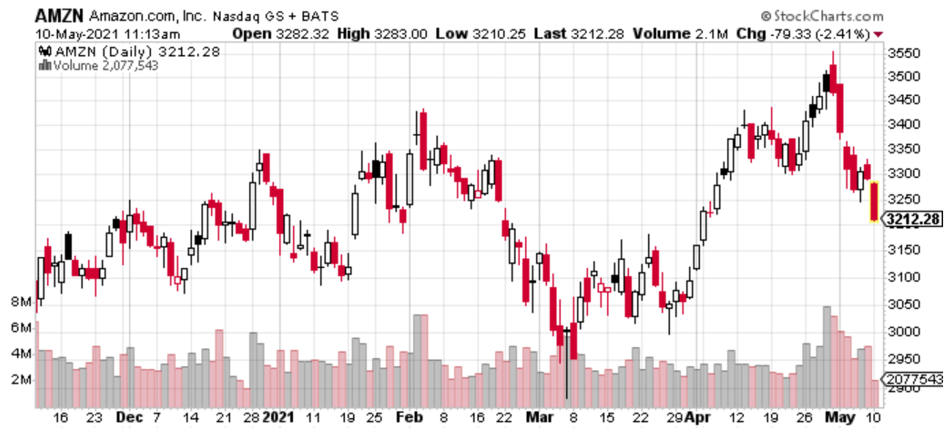Connectivity is a big new business, and the surprise winner is Amazon.com (Nasdaq: AMZN), a company best known for selling books and a broad array of consumer goods.
Managers at Sidewalk Network, an Amazon.com subsidiary, announced Friday it’s expanding to capture small slices of bandwidth from older smart speakers.
The importance of Sidewalk cannot be overstated.
The network combines low-powered Bluetooth wireless technology to bridge together millions of Ring doorbells and Echo smart speakers. The devices then become access points and transmitters for a low bandwidth, long-range wireless network.
In many communities, Sidewalk is already providing shared connectivity to entire neighborhoods of smart cameras and exterior lights that might otherwise be outside of the range of home Wi-Fi.
That is only the tip of what is possible.
Manolo Arana, general manager at Sidewalk, told TechCrunch last September that the new wireless protocol could make cell towers redundant for Internet of Things (IoT) connections. Cutting telecommunication companies out of the loop would be a big deal. Sensors that do not require cellular radios are cheaper to produce. They also require a lot less power to remain operational in the field.
Amazon.com product managers cleverly positioned a company best known for online retail as the gatekeeper to this alternative, fully encrypted, low-cost and low-power connectivity network.
Analysts at McKinsey and Co., a global business consultancy, believe IoT is at the core of digital transformation. According to a company report, adding sensors and always-on connectivity will help businesses create between $4 trillion and $11 trillion in value by 2025.
Related Post: 5 Digital Transformation Winners
The first big test for Sidewalk began last year when the company partnered with Tile, the maker of a popular low-powered Bluetooth tag system for keys and other valuables. At the launch event in September, Sidewalk managers showed off the system being used to locate lost pets many miles outside of the home Wi-Fi range.
The utility is similar to AirTags, a family of new, coin-sized devices that use the Apple Inc. (Nasdaq: AAPL) Find My network. The tags emit a small Bluetooth radio signal that is picked up by every iPhone, iPad and Mac on the global network. In theory, those signals mean tagged lost items should be retrievable across continents.
Sidewalk one-ups the Find My network by adding LoRa, a long-range wireless technology. The protocol is based on a proprietary low-power, wide area network modulation.
For years, energy and industrial companies have deployed LoRa-enabled sensors and actuators to transmit tiny bits of data across several miles. The tech helps with preventative maintenance on oil rigs and geolocating mining machines.
It’s not difficult to see how Sidewalk could quickly become a big business for Amazon.
Its Amazon Web Services (AWS) serves the most Fortune 100 companies and is the largest cloud computing business by revenue, with an annual run rate of $54 billion. It’s the titan of Amazon.com subdivisions.
Related Post: Why the Cloud is the Key to Amazon’s Future
Sidewalk would be a powerful value-added service for enterprises building out IoT strategies for factories and heavy machinery, running alongside AWS as a top subsidiary.
In densely populated regions, Sidewalk could bring full plug-and-play connectivity for next-generation home automation devices. Connected security cameras could become independent of the strength or reliability of home Wi-Fi systems.
Today, Amazon’s Echo devices control 70% of the smart speaker market in the United States. And Alexa, the digital assistant brain of these devices, has landed in 200 million products, up 100% since 2019.
Sidewalk’s service would be a big selling factor for the Echo family of connected devices and the Amazon Alexa ecosystem.
The beauty of Amazon.com as a business is that its competitive advantages are often hiding in plain sight. Sidewalk adds value to enterprise clients continuing down their digital transformation path. It also makes the Amazon home automation ecosystem far more compelling than the competition.
Amazon.com tested its August 2020 high a week ago at $3,550. The stock has since pulled back to about $3,300. Shares trade at 45.7 times forward earnings and four times sales. Given the strength of the franchise, its competitive advantages and the strength of the ecosystem this valuation seems cheap.
Related Post: Amazon Primed for New Stretch of Hypergrowth
Longer-term investors should continue to buy Amazon.com into weakness.
Best wishes,
Jon D. Markman




